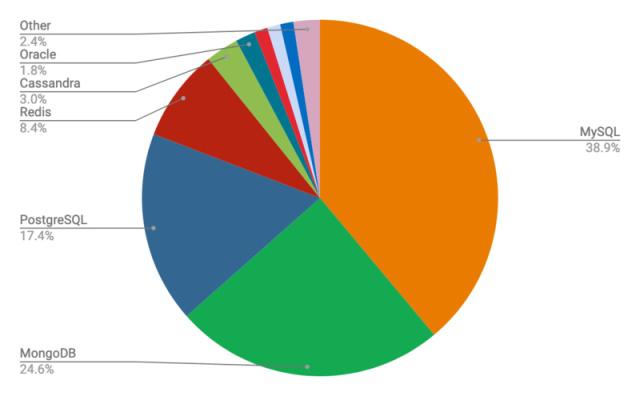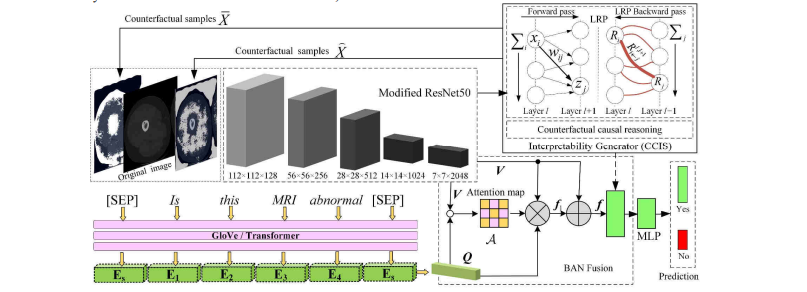数据库(Database),简称db
mariadb=mysql
常见的数据库:mysql、oracle、高斯(Gauss)、redis、sqlserver、SQLite、HBase
一、SQL(Structured Query Language):结构化查询语言
1、作用:用于访问和处理数据库的标准计算机语言
2、语法特点:
(1)SQL对关键字的大小不敏感(针对windows)
(2)SQL语句可以单行或者多行书写,每行以分号结束
(3)SQL注释
3、mysql基本操作-ddl
(1)对数据库的基本操作
| 功能 | SQL |
|---|---|
| show databases; | 查看所有的数据库 |
| create database [if not exists] mydb1 [charset=utf8]; | 创建数据库 |
| use mydb1; | 切换库 |
| select database(); | 显示当前所在库 |
| drop database [if exists] mydb1; | 删除数据库 |
(2)对数据库的常用操作-创建表
创建表格式:
create table [if not exists] 表名 (
字段名1 类型[(宽度)] [约束条件] [comment '字段说明'],
字段名2 类型[(宽度)] [约束条件] [comment '字段说明'],
字段名3 类型[(宽度)] [约束条件] [comment '字段说明']
) [表的一些设置];
create table emp(
eid int(1) comment '员工编号',
ename varchar(1) comment '员工姓名'
);
insert into emp values
(-2147483648,'A'),
(21333,'B');
select * from emp;
注:
(1)常见的数据类型有:
①数值类型
| 类型 | 大小 | 用途 |
|---|---|---|
| tinyint | 1byte | 小整数值 |
| int或integer | 4byte | 大整数值 |
| double | 8byte | 浮点数值 |
tinyint范围:[0,255]
int范围:[-2147483648,2147383647]
②日期和时间类型
| 类型 | 格式 | 用途 |
|---|---|---|
| date | YYYY-MM-DD | 日期值 |
| datetimestamp | YYYY-MM-DD HH:MM:SS | 混合日期和时间值 |
| timestamp | YYYYMMDDHHMMSS | 混合日期和时间值,时间戳 |
③字符串类型’
char-定长
varchar-变长
如果是字符串类型,会有宽度的限制,宽度填多少就代表字符串有多长
如果是数值类型,比如INT(1),1不代表数据的长度,如果插入了大于显示宽度的值,只要该值不超过该类型的取值范围,数值依然显示出来
(3)对表结构的常用操作
| sql | 功能 |
|---|---|
| show tables | 查看当前库有哪些表 |
| show create table emp; | 查看指定某个表的创建语句 |
| desc 表名; | 查看表结构 |
| drop table 表名; | 删除表 |
show tables;
show create table emp;
desc emp;
drop table emp;
4、mysql数据库基本操作-dml
DML是指数据操作语言,Data Mainpulation Language,用于对数据库表中记录进行更新、删除、插入等操作
关键字:
insert-插入
delete-删除
update-更新
(1)数据插入
语法格式:
#向表中指定某些列插入数据
insert into 表名 (列名1,列名2,列名3...)
values (值1,值2,值3...);
#向表中所有列插入数据
insert into 表名 values (值1,值2,值3...);
#向student表中sid name gender age birth 字段添加数据
insert into student
(sid,name,gender,age,birth)
values
(1001,'张三','男',20,'1994-12-01');
#向student表中所有字段添加数据
insert into student
values
(1002,'赵敏','女',18,'1995-12-03','上海');
#向student表中所有字段添加多行数据
insert into student
VALUES
(1003,'张三丰11','男',88,'1918-08-13','北京'),
(1004,'张三丰111','男',36,'1983-7-11','北京');
注:以上两种格式均可,SQL语句以分号结尾,可以在一条insert语句中同时插入多个列表值,values只需要写一次,括号之间用逗号隔开
(2)数据修改
语法格式:
update 表名 set 字段名 = 值,字段名 = 值...;
update 表名 set 字段名 = 值,字段名 = 值... where 条件;
#将所有学生的地址修改为重庆
update student set address = '重庆';
#将sid为1004的学生地址修改为北京
update student set address = '北京' where sid = 1004;
#将sid为1004的学生地址修改为beijing并且性别修改为男
update student
set address = 'beijing',gender = '男'
where sid = 1004;
(3)数据删除
语法格式:
delete from 表名 [where 条件];
truncate table 表名
或者
truncate 表名
#删除sid为1004的学生数据
delete from student where sid = 1004;
#删除表所有数据
delete from student;
#再添加两条数据
insert into student
values
(1003,'张三丰11','男',88,'1918-08-13','北京'),
(1004,'张无忌1','男',36,'1983-07-11','北京');
#清空表数据
truncate student;
注:delete和truncate原理不同,delete只删除内容,而truncate类似drop table再create table,可以理解将整个表删除,然后再创建该表
5、mysql约束
何为约束,constraint,约束实际上就是表中数据的限制条件
作用:为了保证表中记录的完整性和有效性,比如用户表的手机号不能为空,身份证号不能重复
分类:
(1)主键约束(primary key) PK
(2)自增长约束(auto_increment)
(3)非空约束(not null)
(4)唯一性约束(unique)
(5)默认约束(default)
(6)零填充约束(zerofill)
(7)外键约束(foregin key)FK
(1)主键约束
可以加到某个列上,也可以加到多个列上
①概念:
a.主键约束相当于唯一约束和非空约束的组合,即主键约束的列不允许重复,也不允许出现空值
b.每个表最多允许一个主键
②添加单列主键
a.在定义字段的同时指定主键
语法格式:
create table 表名(
...
<字段名> <数据类型> primary key,
...
)
INSERT INTO emp1
(name,dept_id,salary)
VALUES
('张三',8801,3600);
#Field 'eid' doesn't have a default value
#设置了主键,该字段必须要给值
insert into emp1
values
(60051,'张三丰',5003,5000)
b.在定义完字段之后指定主键
语法格式:
create table 表名(
...
[constraint <约束名>] primary key(字段名)
);
create table emp2(
eid int comment '编号',
name varchar(20) comment '姓名',
dept_id int comment '部门编号',
salary double comment '工资',
constraint pk1 primary key(eid)
);
#主键测试emp2
#主键=唯一+非空组合
insert into emp2 VALUES
(1001,'张安',10,6000);
insert into emp2 values
(1002,'杰森',40,6000);
insert into emp2 values
(NULL,'杰森',40,6000);
insert into emp2 (name,dept_id,salary) values
('杰森',40,6000);
③添加联合主键(多列主键)
语法格式:
create table 表名 (
...
primary key (字段1,字段2,....字段n)
)
create table emp3 (
name varchar(20) comment '姓名',
dept_id int comment '部门编号',
salary double comment '薪资',
constraint ndpk primary key (name,dept_id)
)
insert into emp3 VALUES
('111',10,5000),
('112',10,6000);
insert into emp3 values
('113',10,7000),
('111',20,8000);
insert into emp3 VALUES
('114',10,9000),
('113',20,10000);
注:多个键作为主键时里面列的值不能完全相同,允许其中几个相同,也不允许出现空值
(2)自增长约束
概念:当字段设置为自增长约束后,在插入数据时,不需要用户输入数据,而由数据库系统根据定义自动赋值,每增加一条记录,该字段会以相同的步长进行增长,一般是跟主键一块搭配使用
语法格式:
create table 表名 (
...
字段名 数据类型 auto_increment
...
)
#创建madb1数据库
create database if not exists madb1 charset = utf8;
create table t_user1(
id int primary key auto_increment,
name varchar(20)
);
insert into t_user1 VALUES
(NULL,'张三');
insert into t_user1 (name) VALUES ('李四');
①特点
a.auto_increment的初始值是1,每新增一条记录,字段值自动嘉1
b.一个表中只能有一个字段使用auto_increment
c.auto_increment约束的字段必须具备NOT NULL 属性
d.支持的类型(TINYINT、SMALLINT、INT、BIGINT)等
e.如果最大值达到上限,auto_increment就会失效
②指定自增字段的初始值
方式1:创建表时指定
语法格式:
creat table 表名(
... primary key auto_increment,
...
) auto_increment = 10;
#指定自增字段的初始值-方式1
create table t_user2 (
id int primary key auto_increment,
name varchar(20)
) auto_increment = 100;
insert into t_user2 values
(NULL,'aaa'),
(NULL,'bbb');
③delete和truncate区别
delete数据之后自动增长从断点开始
truncate数据之后自动增长是从默认起始值开始
(3)非空约束
①添加非空约束
语法格式:
create table 表名 (
字段名 数据类型 not null,
...
);
create table t_user6 (
id int,
name varchar(20) not null,
address varchar(20) not null
);
insert into t_user6 (id) values (1001); #不可以
insert into t_user6 (id,name,address) values (1001,NULL,NULL); #不可以
insert into t_user6 (id,name,address) values (1001,'NULL','NULL'); #可以
insert into t_user6 (id,name,address) values (1001,'',''); #可以
注:单纯的NULL才表示空值,加上引号会变成字符串
(4)唯一性约束
唯一约束(unique key)是指所有记录中的字段值不能重复,但是唯一约束的列可以为NULL
①添加唯一约束
语法格式:
create table 表名(
字段名 字段类型 unique,
...
)
create table t_user8 (
id int,
name varchar(20),
phone_number varchar(20) unique
);
#测试唯一性约束
insert into t_user8 values
(10,'aaa','13111112222');
insert into t_user8 VALUES
(11,'aab','13111112222');
insert into t_user8 values
(12,'aac',NULL);
insert into t_user8 VALUES
(13,'aad',NULL);
insert into t_user8 (id,name) VALUES
(14,'aba');
#NULL和任何值都不相同,NULL!=NULL
(5)默认约束
默认值约束用来指定某列的默认值
①添加默认约束
语法格式:
create table 表名(
字段名 字段类型 default 默认值,
....
)
create table t_user10 (
id int,
name varchar(20),
address varchar(20) default '北京'
);
insert into t_user10 (id,name)
values (10,'aac'),(11,'ace');
(6)零填充约束
zerofill:
①插入数据时,当该字段的值长度小于定义的长度时,会在该值的前面补上相应的0
②zerofill默认为int(10)
①添加零填充约束
语法格式:
create table 表名 (
字段名 类型 zerofill,
...
)
create table t_user11 (
id INT zerofill,
name varchar(20)
);
insert into t_user11 VALUES
(31,'aac'),(32,'ddd');
6、MySQL基本操作-DQL
DQL:Data Query Language,数据查询语言
语法格式:
select
[all|distinct]
<目标列的表达式1> 别名1,
<目标列的表达式2> 别名2...
from <表名> 别名,表名 别名
[where 条件表达式]
[group by 列名]
[having 条件表达式]
[order by 列名 [asc|desc]]
[limit 数字1,数字2]
简化版语法
select *|列名 from 表名 where 条件;
create database if not exists mydb2;
(1)运算符
①算术运算符
| 运算符 | 说明 |
|---|---|
| + | 加法 |
| - | 减法 |
| * | 乘法 |
| DIV或/ | 除法 |
| %或MOD | 取模,求余数 |
select 5+2;
select 5-2;
select 5*2;
select 5/2;
select 5 DIV 2;
select 2%5;
select 2 MOD 5;
#将每件商品的价格加10元
select pname,price,price+10 from product;
#将每件商品的价格上调10%
select pname,price,price*1.1 from product;
select pname,price,price+price*0.1 from product;
注:乘法可能有运算结果不精确问题
②比较运算符
| 运算符 | 说明 |
|---|---|
| = | 等于 |
| <和<= | 小于和小于等于 |
| >和>= | 大于和大于等于 |
| <=> | 安全的等于 |
| !=或<> | 不等于 |
| IS NULL | 判断一个值是否为NULL |
| IS NOT NULL | 判断一个值是否不为NULL |
| LEAST | 当有两个参数或者多个参数时,返回最小值 |
| GREATEST | 当有两个参数或者多个参数时,返回最大值 |
| BETWEEN AND | 判断一个值是否介于两个值之间 |
| IN | 判断一个值是否在IN列表中 |
| NOT IN | 判断一个值是否不是在IN列表中 |
| LIKE | 模糊查询,通配符匹配 |
#使用least求最小值
select least(10,20); #10
select least(10,30,20); #10
select least(10,null,30); #null
#使用greatest求最大值
select greatest(10,20,30); #30
select greatest(10,null,30); #null
#1、查询商品名称为'海尔洗衣机'的商品的所有信息
#*代表全部字段
select * from product where pname = '海尔洗衣机';
#2、查询商品价格为800的商品
select * from product where price = 800;
#3、查询价格不是800的所有商品
select * from product where price != 800;
select * from product where price <> 800;
select * from product where price not in (800);
select * from product where not (price = 800);
#4、查询商品价格大于等于60元的所有商品信息
select * from product where price >= 60;
select * from product where not (price < 60);
#5、查询商品价格在200到1000之间(包含200和1000)的所有商品
select * from product where price >= 200 and price <= 1000;
select * from product where price between 200 and 1000;
#6、查询商品价格时200或800的所有商品
#or或||
select * from product where price = 200 or price = 800;
select * from product where price = 200 || price = 800;
select * from product where price in (200,800);


































![[SCTF2019]Strange apk](https://i-blog.csdnimg.cn/direct/222e2e46f9924792a87bb31d4f08e143.png)





